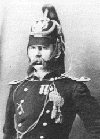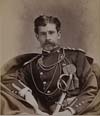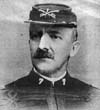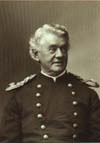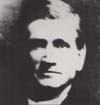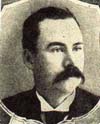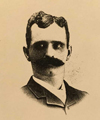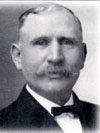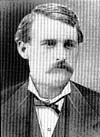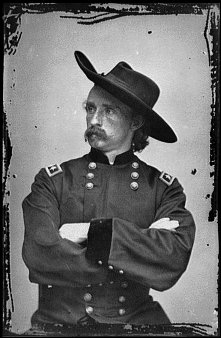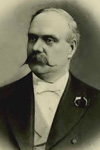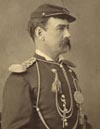Henry James Nowlan (left) was born on June 18, 1837, on the Corfu Ionian Islands. He was a First Lieutenant with the Quartermaster who was not present at the battle due to serving as the assistant quartermaster for Gen. Terry’s expedition.
Ferdinand Klawitter (right) was born in Conitz, Berlin, Germany, on June 19, 1836. He was a Private with Company B who was not present at the battle due to detached service, tending the garden at Fort Abraham Lincoln, Dakota Territory.
Charles William Larned (left) died on June 19, 1911, in Danville, New York, and was buried in the United States Military Academy Post Cemetery at West Point, New York. He was a Second Lieutenant with Company F but was not present at the battle because he was on detached service as an assistant professor of drawing at West Point.
Charles Albert Varnum (left) was born in Troy, New York, on June 21, 1849. He was a Second Lieutenant in Company A who commanded the scouts during the battle. He participated in the valley and hilltop fights and was wounded in his leg.
Luther Rector Hare (right) married Augusta Virginia Hancock, niece of General Winfield Scott Hancock, on June 21, 1878. They divorced prior to 1906 when she married again. Hare was a Second Lieutenant with Company K who participated in the valley and hilltop fights.
Frank K. Lombardy died in San Diego, California, on June 21, 1917, and was buried there in the Mount Hope Cemetery. He was a Private with the Band who was at Fort Abraham Lincoln, tending the band garden, after recuperating from a sprained right ankle.
George Custer (left) met with General Alfred Terry and Colonel John Gibbon aboard the steamer Far West on June 21, 1876.
Frederick William Benteen (right) died on June 22, 1898, in Atlanta, Georgia. He was originally buried in the Westview Cemetery in Atlanta but was reinterred in Arlington National Cemetery in November 1902. He was the Captain of Company H who commanded a battalion during the battle. He led a scouting party and was wounded during the hilltop fight.
Charles Henry Welch (left) died in LaSalle, Colorado, on June 22, 1915, and was buried in the Evans Cemetery in Evans, Colorado. He was a Private in Company D who participated in the hilltop fight. He was awarded the Medal of Honor for his actions during the battle.
Carl August Bruns was born on June 23, 1830, in Brunswick, Germany. He was a Private with Company E who was not present at the battle due to detached service tending the company garden at Fort Abraham Lincoln.
John Brightfield was born in Dearborn County, Indiana, on June 23, 1853. He was a Private with Company C who was killed with Custer’s Column.
Fred Stressinger was born on June 24, 1852, in Ripley County, Indiana. He was a Corporal in Company M who was killed in the valley fight.
James Augusta Abos was born on June 24, 1858, in Albany, New York. He was a Private in Company B who was not at the battle because he was awaiting trial for desertion.
